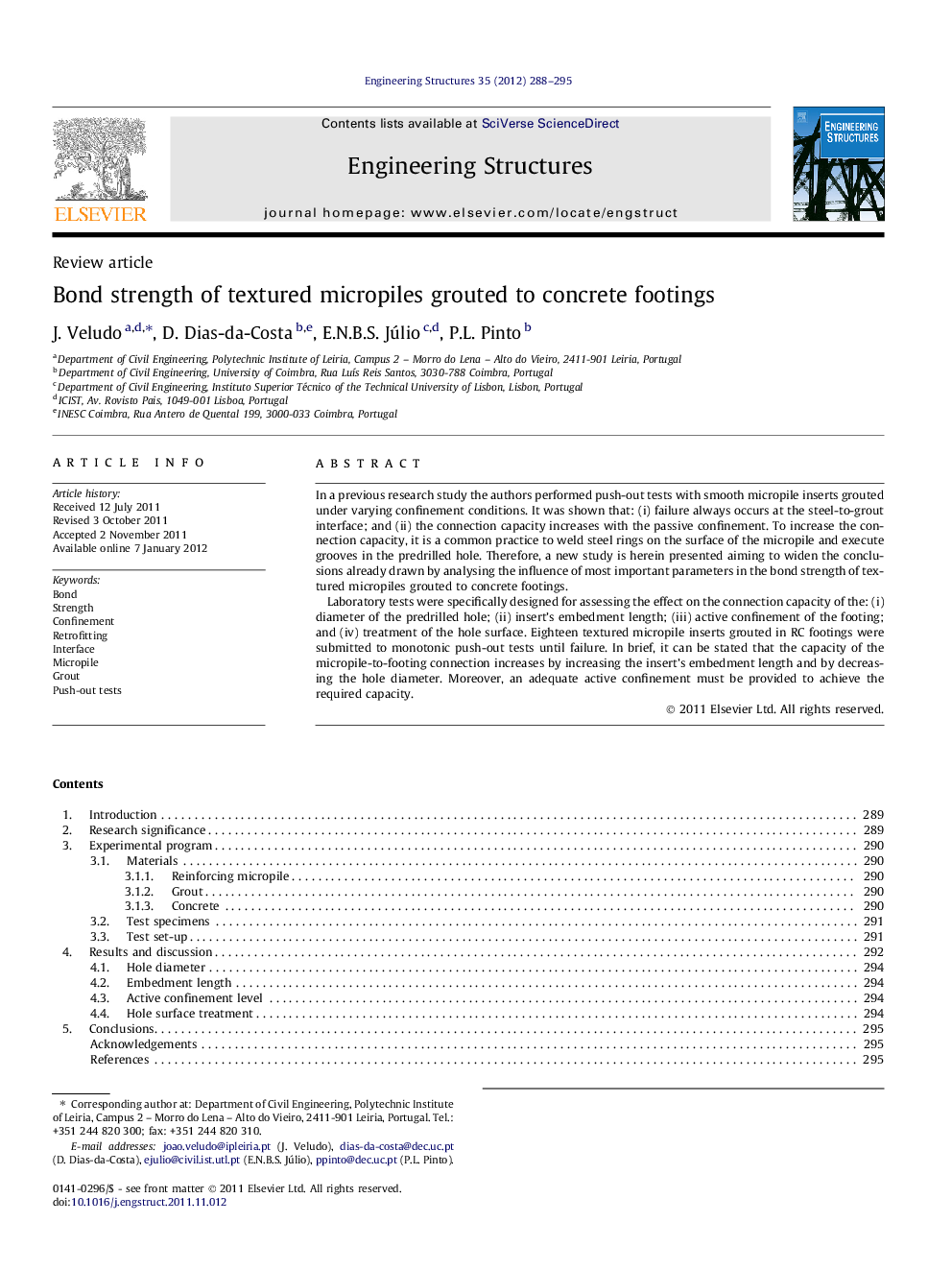| Article ID | Journal | Published Year | Pages | File Type |
|---|---|---|---|---|
| 267592 | Engineering Structures | 2012 | 8 Pages |
In a previous research study the authors performed push-out tests with smooth micropile inserts grouted under varying confinement conditions. It was shown that: (i) failure always occurs at the steel-to-grout interface; and (ii) the connection capacity increases with the passive confinement. To increase the connection capacity, it is a common practice to weld steel rings on the surface of the micropile and execute grooves in the predrilled hole. Therefore, a new study is herein presented aiming to widen the conclusions already drawn by analysing the influence of most important parameters in the bond strength of textured micropiles grouted to concrete footings.Laboratory tests were specifically designed for assessing the effect on the connection capacity of the: (i) diameter of the predrilled hole; (ii) insert’s embedment length; (iii) active confinement of the footing; and (iv) treatment of the hole surface. Eighteen textured micropile inserts grouted in RC footings were submitted to monotonic push-out tests until failure. In brief, it can be stated that the capacity of the micropile-to-footing connection increases by increasing the insert’s embedment length and by decreasing the hole diameter. Moreover, an adequate active confinement must be provided to achieve the required capacity.
► This work addresses textured micropiles grouted to RC footings. ► Textured inserts lead to higher load capacity when compared to smooth inserts. ► The treatment of the hole’s surface influences failure mode and capacity. ► Increasing the active confinement also increases ductility and capacity.
